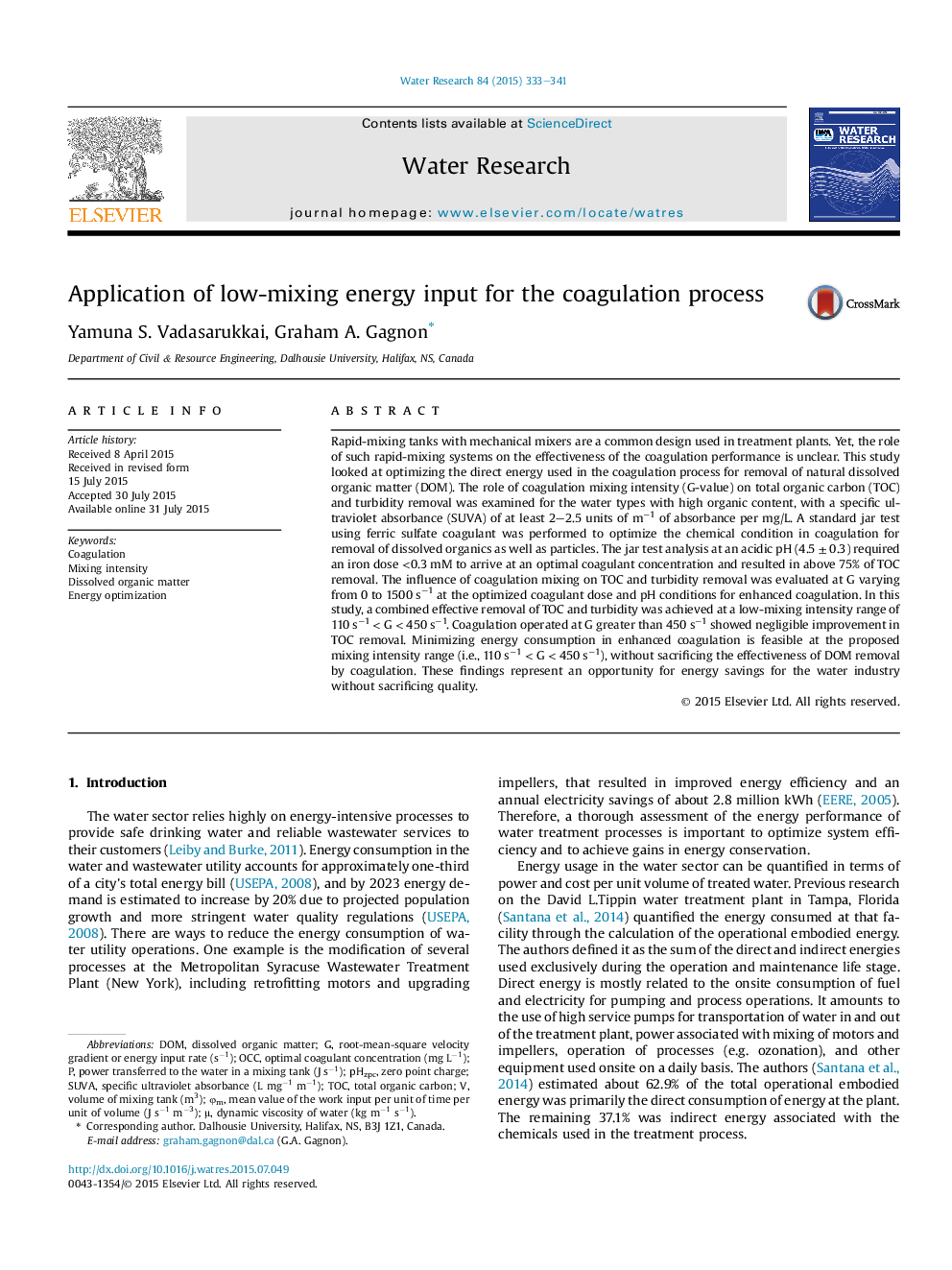| کد مقاله | کد نشریه | سال انتشار | مقاله انگلیسی | نسخه تمام متن |
|---|---|---|---|---|
| 4481101 | 1623084 | 2015 | 9 صفحه PDF | دانلود رایگان |
• A low energy input of 110–450 s−1 was the optimal G for enhanced coagulation.
• Significant energy improvement and cost savings is attainable at the proposed G.
• Coagulation at G > 450 s−1 had negligible improvement in organics removal.
• Represents an opportunity to save energy without sacrificing water quality.
Rapid-mixing tanks with mechanical mixers are a common design used in treatment plants. Yet, the role of such rapid-mixing systems on the effectiveness of the coagulation performance is unclear. This study looked at optimizing the direct energy used in the coagulation process for removal of natural dissolved organic matter (DOM). The role of coagulation mixing intensity (G-value) on total organic carbon (TOC) and turbidity removal was examined for the water types with high organic content, with a specific ultraviolet absorbance (SUVA) of at least 2–2.5 units of m−1 of absorbance per mg/L. A standard jar test using ferric sulfate coagulant was performed to optimize the chemical condition in coagulation for removal of dissolved organics as well as particles. The jar test analysis at an acidic pH (4.5 ± 0.3) required an iron dose <0.3 mM to arrive at an optimal coagulant concentration and resulted in above 75% of TOC removal. The influence of coagulation mixing on TOC and turbidity removal was evaluated at G varying from 0 to 1500 s−1 at the optimized coagulant dose and pH conditions for enhanced coagulation. In this study, a combined effective removal of TOC and turbidity was achieved at a low-mixing intensity range of 110 s−1 < G < 450 s−1. Coagulation operated at G greater than 450 s−1 showed negligible improvement in TOC removal. Minimizing energy consumption in enhanced coagulation is feasible at the proposed mixing intensity range (i.e., 110 s−1 < G < 450 s−1), without sacrificing the effectiveness of DOM removal by coagulation. These findings represent an opportunity for energy savings for the water industry without sacrificing quality.
Figure optionsDownload high-quality image (184 K)Download as PowerPoint slide
Journal: Water Research - Volume 84, 1 November 2015, Pages 333–341
